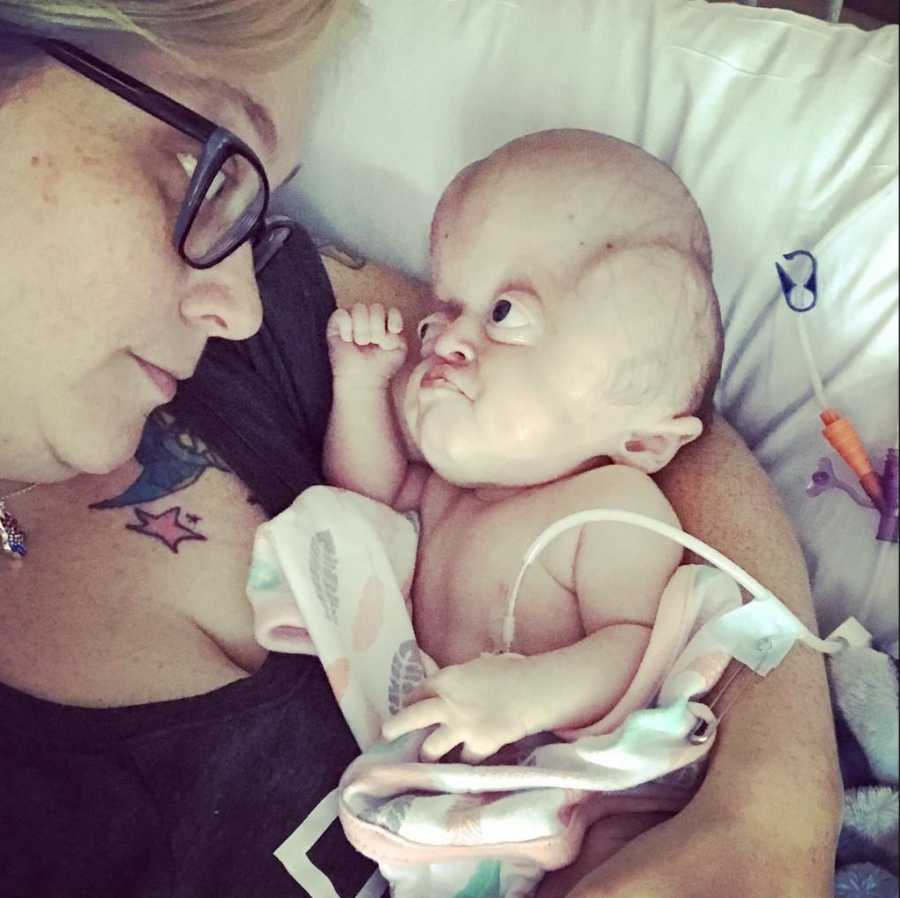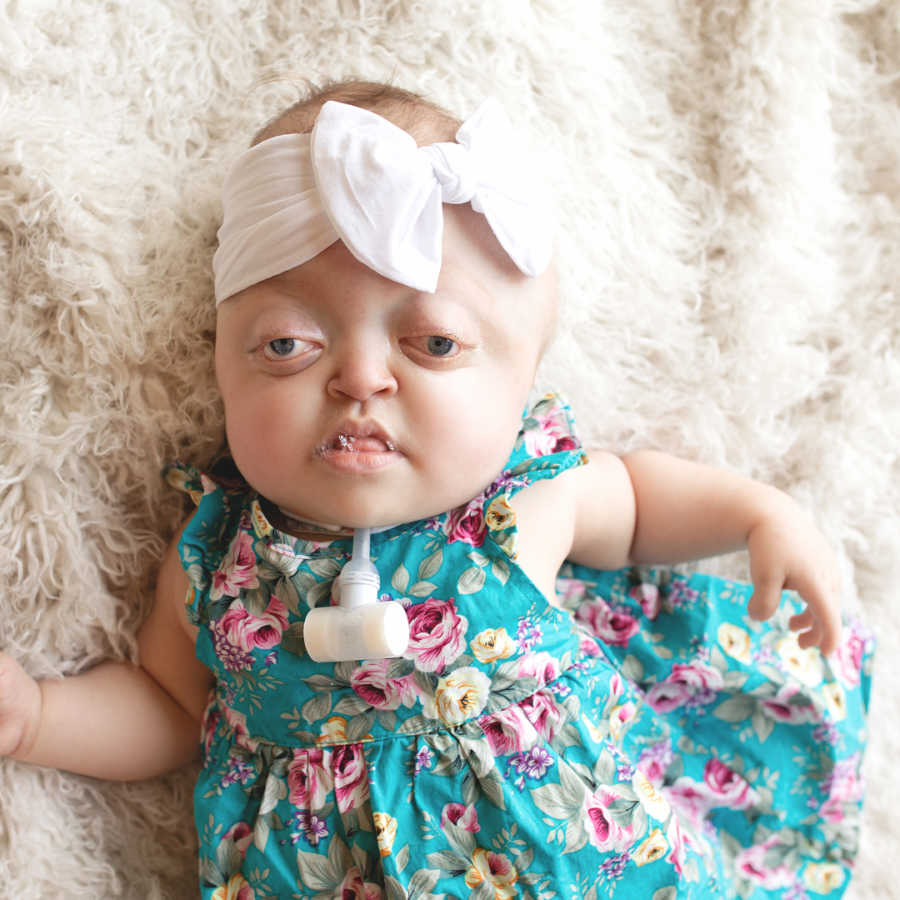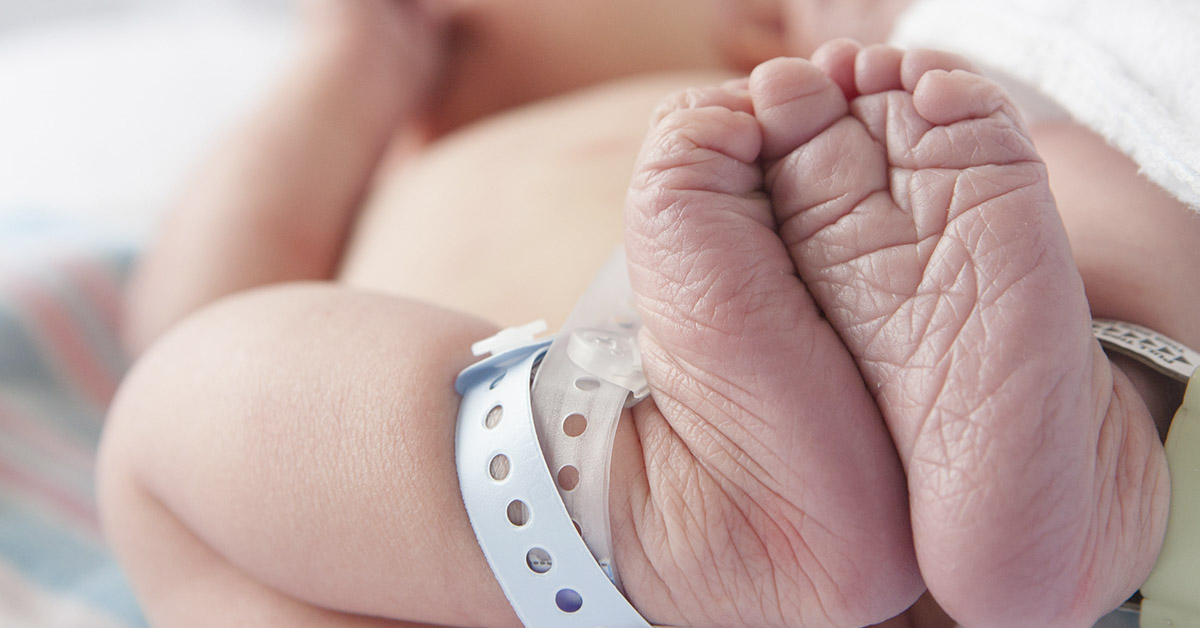Every parent hopes that their children will have a normal life filled with friends, successes, and love. That hope can often seem harder to achieve if their child is born with a disability or another type of problem. This mom has opened up about what it is like having a daughter born with a rare genetic disorder. When she was pregnant, she found out her daughter would be born with Pfeiffer Syndrome, a malformation of the skull. The family is still determined that their daughter will have a happy life, no matter what.
Our Baby Was Born With Pfeiffer Syndrome
40-year-old Amanda Schuster and her husband Robert, 38, had been trying for quite a while to have a baby of their own. They were just about ready to speak to their doctor about options such as IVF when Amanda missed her period. Sure enough, Amanda was pregnant, and the couple was overjoyed. They soon found out that their child would be a little girl and they named her Emmy. Then, at her 20-week scan, the doctors told her that something wasn’t quite right.
“The doctors that looked at our scans told us [Emmy] had a skeletal dysplasia that would be incompatible with life. It was very scary. It was very dire,” Amanda recalled. (1)

The doctors said that it was better for her to terminate the pregnancy. Not ready to give up on their baby girl, they went for a second opinion at Seattle Children’s Hospital. It was there that the doctors gave her a different diagnosis: Pfeiffer Syndrome.
What Is Pfeiffer Syndrome?
Pfeiffer Syndrome is a genetic condition in which certain skull bones fuse prematurely. This prevents the skull from forming normally and affects the shape of the skull and the face. It can also affect bones in the hands and feet. Pfeiffer Syndrome will often lead to bulging, wide-set eyes, a high forehead, an underdeveloped jaw, and a beaked nose. Hearing loss and dental problems are extremely common. (2)

There are three types: Type 1, 2, and 3. People with type 1 have normal intelligence and life expectancy. Types two and three are more severe and often involve nervous system problems. It can limit brain growth and lead to developmental and neurological problems. These people can also have problems with other bones and joints which limit mobility. Finally, malformations in the face can restrict breathing and even be fatal.
Read: ‘A Miracle Baby’: The Black Couple Who Gave Birth to a Blond, Blue-Eyed Child
Baby Emmy Would Live

Amanda said it was devastating news. Still, she was happy to know that, despite the challenging life ahead of her baby girl, Emmy would live. Little Emmy would need countless surgeries, and still, she would never look like other children.
“The doctor gave us the honest reality of what life would look like for her,” Amanda said. “It would require multiple surgeries. But he had treated children with Pfeiffer syndrome … and he sees them go to college and he sees them living happy lives. He gave us hope.”
Amanda gave birth via c-section on July 13, 2017. Just as the doctors said, Emmy had an enlarged head and bulging eyes. Though they knew what was coming, Amanda says that it was still somewhat shocking to see their baby girl in person.
“Even though we had prepared ourselves as best as we could, it was still a shock to see Emmy in the flesh. Her eyes were huge, her skull was misshapen, and they intubated her immediately before I even got to look at her. She also has the most beautiful blue eyes and dark hair.” (3)
Soon after the birth Emmy was whisked away to the neonatal intensive unit for immediate care. Her first four months of life Emmy lived at the hospital. It was a very challenging time for the family, which also included their seven-year-old son from a previous relationship of Amanda’s.
“The days were long, stressful, and scary. We had to make decisions daily about her care. We had to discuss DNR paperwork and quality versus quantity. We celebrated, and we cried. We fought, and we pleaded.” Amanda recalled.
A Loved Baby
Emmy is a very wanted baby and a very loved one. Since her birth, she has had more than 20 surgeries. The family has had many emergency room visits and stressful nights in the hospital. Despite it all, her parents say that Emmy is a smiling, happy baby. She is developing at an excellent pace, albeit slower than most children her age.
Amanda and Robert say that they know that Emmy’s life won’t be easy. People will stare and children can be cruel. Bullying will likely be inevitable. They hope, however, by sharing her story, some of these barriers will lessen. Hopefully, other parents will teach their children to look past Emmy’s differences and still want to be her friend. For now, they focus on loving her as fiercely as they can and helping her continue to have a happy life.

Keep Reading: Moment deaf boy, two, signs ‘I Love You’ to his mother for the first time
Sources
- “Mom Opens Up About Life with Daughter Who Has Rare Genetic Disorder: ‘She’s a Happy Girl’.” People. Char Adams. January 3, 2019.
- “Pfeiffer syndrome.” Medline Plus
- “‘Her eyes were huge, her skull was misshapen. Even though we had prepared ourselves as best as we could, it was still a shock to see Emmy in the flesh.’: Mom gives birth to baby with Pfeiffer Syndrome.” Love what Matters.

